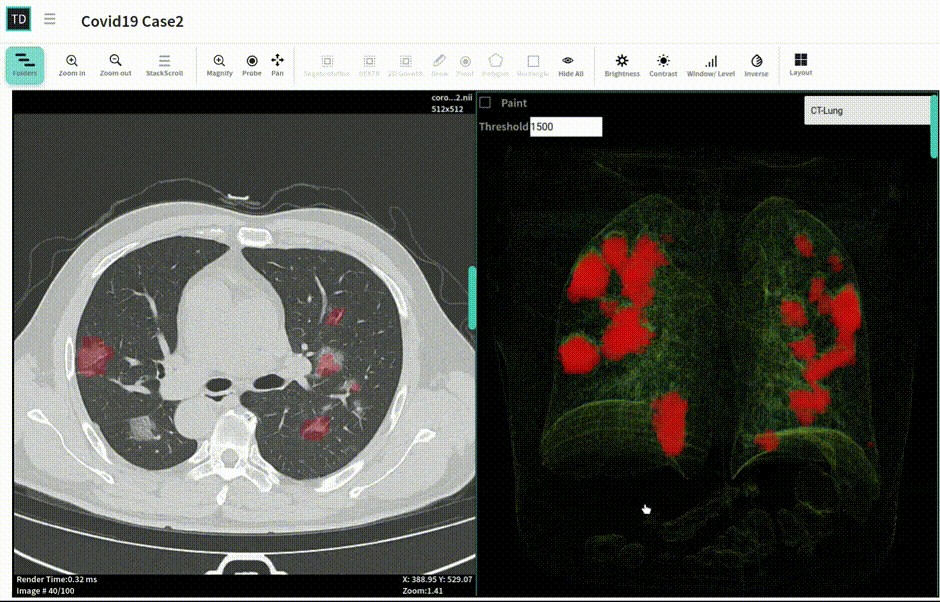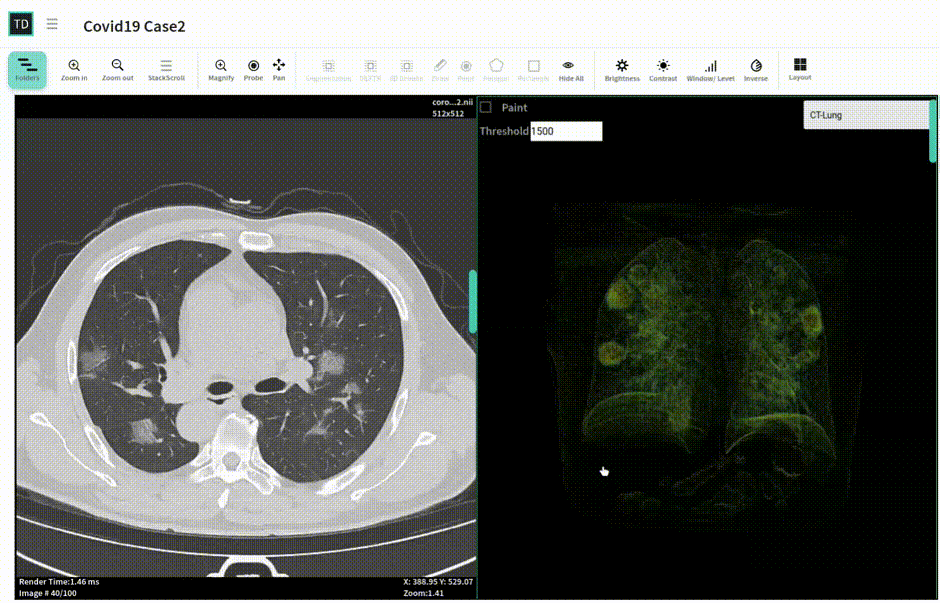Automatic detection of COVID-19 in chest CT using NVIDIA Clara on TrainingData.io

In March 2020, to help data scientists working on COVID-19 diagnostic tools, TrainingData.io provided a free collaborative workspace preloaded with the open-source dataset including chest X-ray and chest CT images. We would like to thank our users for their contributions. We learned a lot from our users. Now, TrainingData.io has launched a drag-and-drop user experience to bring the power of AI to every data-scientist, hospital and, clinic around the world fighting COVID-19 infection.

In the fight against COVID-19, the medical staff has four different kinds of diagnostic data available to them: a) RT-PCR test results, b) Antibodies test results, c) Chest XRay imaging and, d) Chest CT imaging. RT-PCR test results and Antibodies test results are being used as the first step for the detection of COVID-19. Chest XRay and Chest CT imaging are being used to observe the progression of the disease through the lungs of a patient diagnosed with COVID-19.
Lung damage in asymptomatic cases: researchers have studied and published clinical patterns of asymptomatic infections in Nature medicine. They have found that asymptomatic cases of COVID-19 show long term damage caused to lungs. In one such study, it was found that Chest CT exams of asymptomatic patients showed "striped shadows", and in some cases "ground-glass opacities" which is a sign of lung inflammation.
Due to the sheer size of the population affected by this virus, the ability to study lung damage in asymptomatic cases depends on the easy availability of software tools to automatically detect and visualize COVID-19 infection in Chest CT exams.
COVID-19 Ground Glass Opacities (GGOs) & consolidations in Chest CT data
When a COVID-19 patient has the virus progressing through their body, there is a build-up of fluid in the tiny air sacs in the lungs called alveoli [2]. The presence of this fluid causes inflammation of the lungs. The growth in inflammation of the lungs can be observed in XRay and CT imaging. The inflammation of the lungs shows up in the form of ground-glass opacities (GGOs) that are followed by ground glass consolidations.
The medical staff has to use some criteria to make decisions about putting a patient on an oxygen-therapy or ventilator system or putting a recovering-patient off the ventilator system. Visualizing GGOs/consolidation patterns in CT imaging plays an important role in helping medical staff to make proper decisions.
Segmentation of GGOs/consolidations for COVID-19 on TrainingData.io
Starting with a chest CT dataset from the patients diagnosed with COVID-19 in RT-PCR tests, data scientists need to create segmentation masks of Lung, and segmentation masks of ground-glass-opacities (COVID-19 infection). TrainingData.io provides a privacy-preserving parallel-distributed framework for outsourcing annotation work to multiple radiologists. All slices in a CT exam can be accurately annotated at the pixel level and visualized in 3D annotation client provided by TrainingData.io.
Semi-automatic AI-assisted segmentation of GGOs/consolitations
TrainingData.io provides a segmentation ML model that generates ground-glass-opacities/consolidations for an input chest CT exam. This model can be used to seed the initial segmentation. Radiologists can later fix the results of automatic segmentation.

From annotated chest CT dataset to ML (segmentation) model in a few clicks
Why would a regional hospital or clinic need an ML model for the segmentation of GGOs/consolidations trained using its dataset? The answer to this question lies in the science behind the mutation of viruses. COVID-19 is caused by a virus called SARS-CoV-2. This virus has been found to mutate at a fast rate with a large proportion of the genetic diversity being found in all the affected countries. Different mutations of the virus may affect the local population in different ways.
Once the CT dataset and the segmentation masks are ready, a data scientist has to re-train the existing machine learning model to better suit the local demographics. This can be achieved with few clicks in TrainingData.io web-application.
Note: GGOs/consolidations generated on TrainingData.io are only for research purposes, not meant for clinical diagnosis.
[1] https://www.nature.com/articles/s41591-020-0965-6.pdf
[2] https://www.webmd.com/lung/what-does-covid-do-to-your-lungs